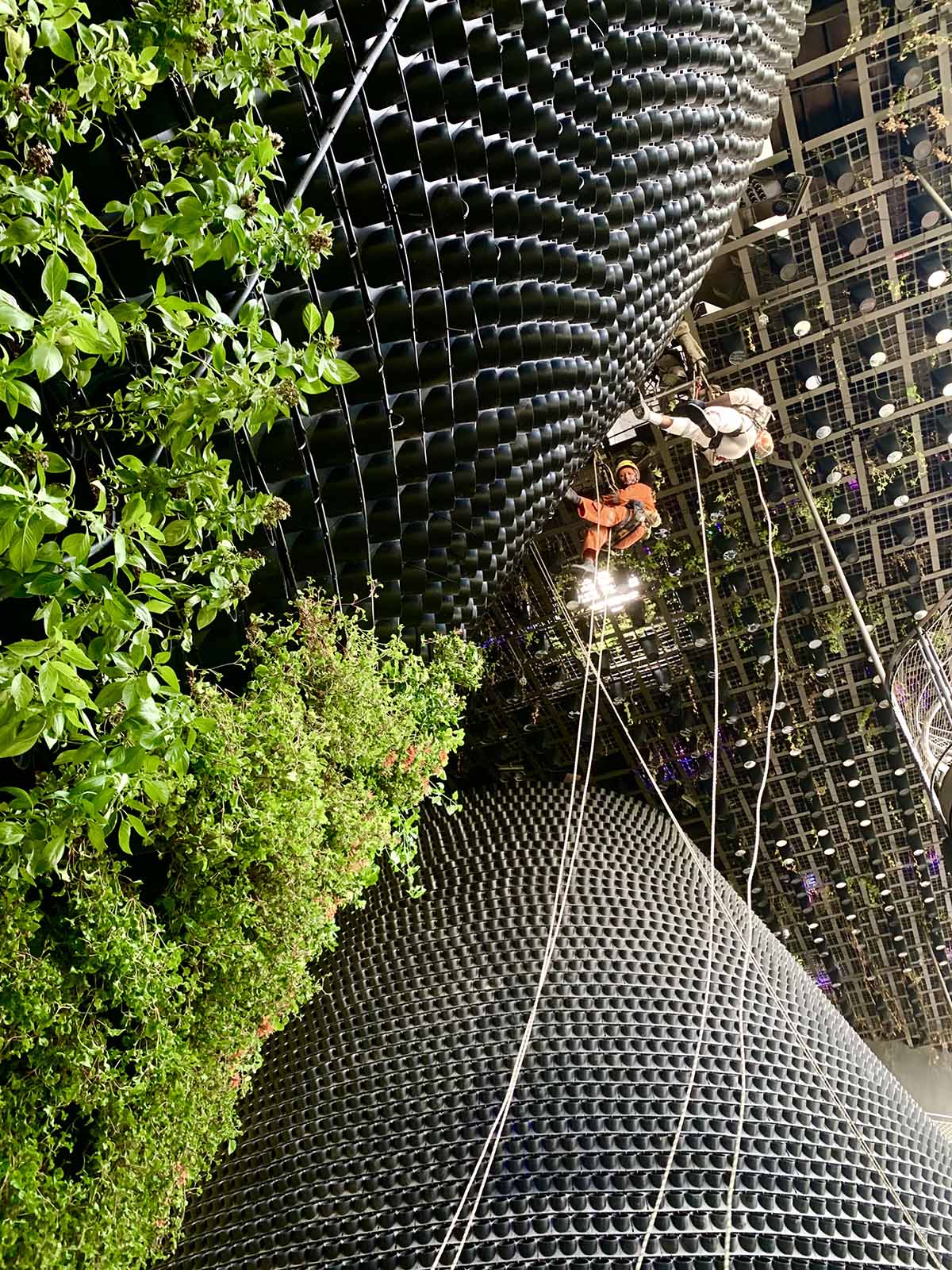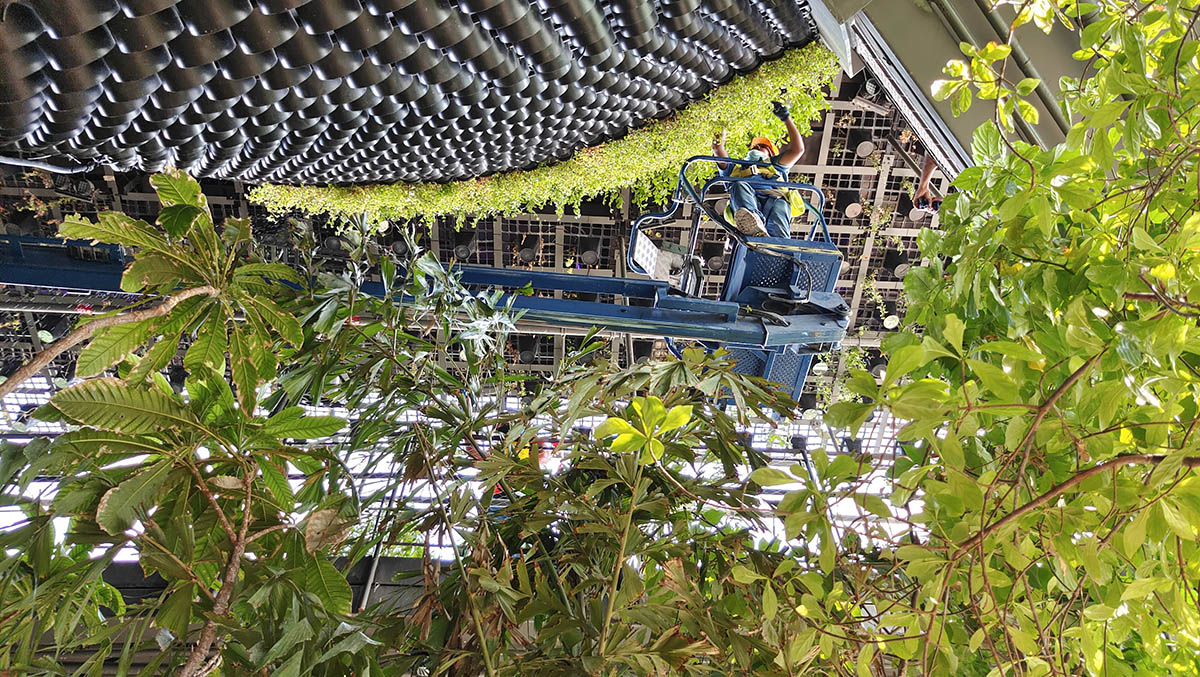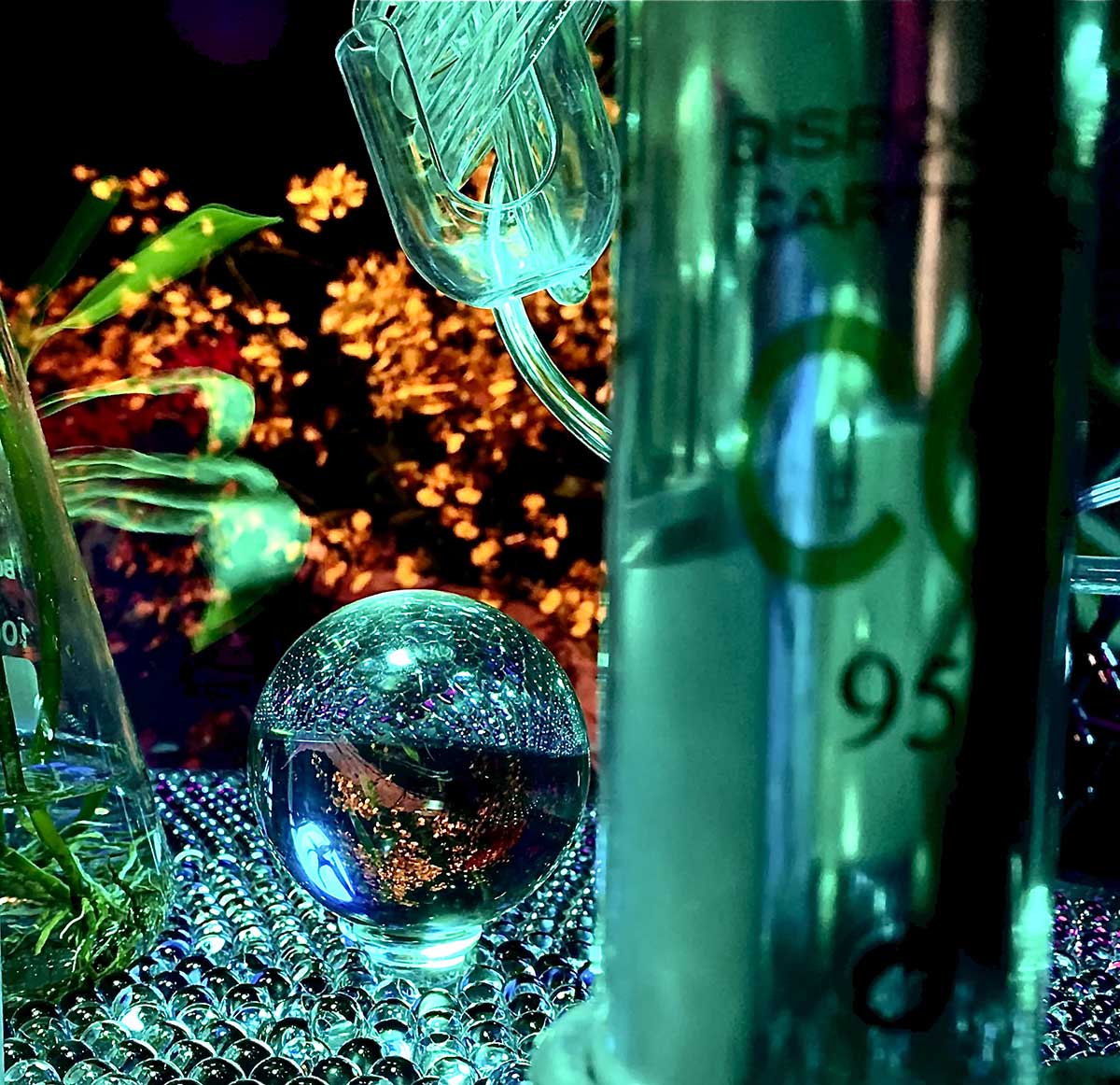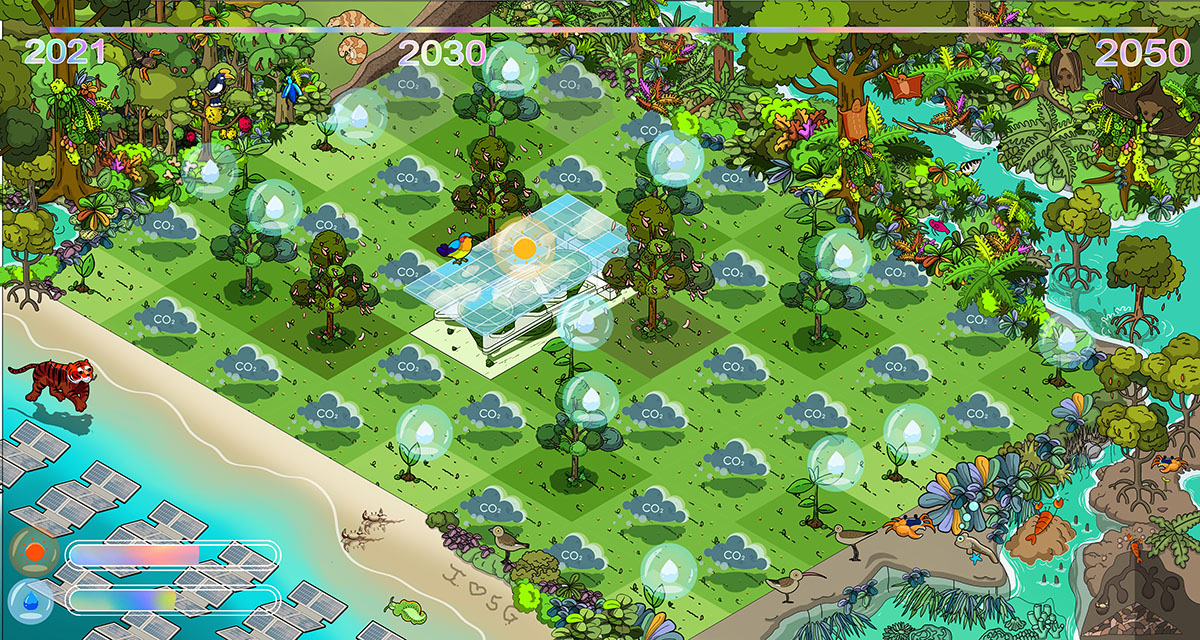Submitted by WA Contents
Technology and art merge at the Singapore Pavilion at Expo Dubai 2020
United Arab Emirates Architecture News - Sep 22, 2021 - 16:47 7186 views

First images have been revealed for the Singapore Pavilion designed by Singapore-based architecture office WOHA at Expo 2020 Dubai which will open to the public on October 1, 2021 in Dubai.
The Singapore Pavilion takes green architecture to the center of design to help visitors appreciate the benefits and possibilities of integrating nature within our urban environments.
Layered with a showcase of greenery, digital solutions and art, the Pavilion exemplifies Singapore’s vision of becoming a City in Nature, and ethos of sustainable development via innovative and impactful urban solutions.

Currently being installed by abseiling workers, the selection of plants has been carefully curated to accentuate the curved wall draping effect and the visual experience of the thematic cones at the Singapore Pavilion, Expo 2020 Dubai. Image © Singapore Pavilion, Expo 2020 Dubai
The Singapore Pavilion features a lush environment with a rich and diverse selection of plants
The Singapore Pavilion is considered one of the greenest pavilions at this year’s Expo, the Pavilion will showcase more than 170 varieties of plants within different layers of greenery in various spaces of the pavilion.
From hanging gardens to vertical walls that feature plants of ethnobotanical value1, visitors are enveloped in an inviting three-dimensional green space that also provides a cool respite from the buzz and excitement of the Expo grounds.
Capturing one's attention upon entering the Rainforest Cone is the Dipterocarp seed kinetic sculpture. It is inspired by the helicopter-like spinning movement of the winged seeds of trees from the Dipterocarp family. These ecologically important giants are some of the tallest trees in Southeast Asia’s tropical forests, and make up 50 to 80 per cent of the forest canopy.

Plants are selectively placed at various zones within the Singapore Pavilion to create a multi-layered green space. Image © Singapore Pavilion, Expo 2020 Dubai
In the Pavilion, Singapore landscape architecture firm Salad Dressing used a unique landscape design, digital and art elements in close partnership with the Pavilion architect WOHA.
The planting strategy for the Pavilion features plants from diverse unique habitats from the natural heritage of Singapore, including varieties found in the tropical rainforest, freshwater forest streams and mangrove habitats that are central to Singapore’s natural environment.

Four terrariums are set against a wall of more than 50 native orchid varieties in the Flower Cone, whose vivid colours are accentuated through a creative play of light and colours. Image © Singapore Pavilion, Expo 2020 Dubai
Four terrariums are set against a wall of more than 50 native orchid varieties in the Flower Cone, whose vivid colours are accentuated through a creative play of light and colours.
Recognising the challenge of growing these plants in Dubai’s desert environment, plants are also strategically situated within the various spaces in the Pavilion based on their specific growth needs.
For example, the Pavilion’s perimeter is protected by trees and palms that thrive well in the Dubai climate, mimicking a forest strata2 to form a well-shaded layer that shields the interior. Sun-loving plants such as Singapore’s national flower, the Vanda Miss Joaquim, will greet visitors at the front of the Pavilion, where it receives the most direct sunlight.
As part of water conservation efforts, potable water produced through the on-site solar desalination process is also deployed through drip irrigation3 to minimise water wastage. In addition, leaf litter is also used to replace water-consuming ground cover, to retain water in the soil. Together with misting, the greenery helps to increase humidity and thermal comfort within the Pavilion.
These strategies enable the creation of microclimates within the Rainforest Cone and the Flower Cone to sustain rainforest plants. The growth of the multitude of plant varieties despite the ground conditions demonstrates the possibility for such lush landscapes to thrive in different environments around the world while using renewable resources.

Witness three prototype climbing robots scaling the green walls of the Flower Cone. Image © Singapore Pavilion, Expo 2020 Dubai
Capitalising on technology to augment bold landscaping design
Caring for the varieties of plants within the Pavilion is no easy feat, especially those on the curved green walls of the Pavilion’s iconic cones.
To address this challenge, three prototype climbing robots will traverse the green walls around the Flower Cone to inspect the health of the plants, as well as to collect environmental data to monitor the performance of the Pavilion’s systems.

Green wall installation at the Singapore Pavilion, Expo 2020 Dubai. Image © Singapore Pavilion, Expo 2020 Dubai
These dome-shaped robots are the result of a collaboration with Singapore-based robotics start-up Oceania Robotics, and they are among the first robots in the world deployed for the purpose of landscape maintenance on curved vertical green walls.
These prototypes present a novel solution particularly relevant in Singapore, where vertical and skyrise greenery is an increasingly common sight in our built environment, a result of the nation’s urban greening policies that encourage building owners to inject more greenery into the buildings.
It also provides a starting point for similar technologies to be developed in the future as such greening initiatives become more commonplace around the world.

The pool of glistening plant gels in the Flower Cone terrariums remind visitors of the scarcity of water used for irrigation, produced by the in-pavilion solar desalination process. Image © Singapore Pavilion, Expo 2020 Dubai
Each robot is equipped with cameras and sensors, and is trained through machine learning to evaluate the health status of individual plants. As they move along green walls, the robots can recognise plants in poor health that need to be replaced, as well as capture data for the calibration of irrigation and grow light settings to help the plants thrive.
This creative application of technology also extends to the existing innovations used by the National Parks Board (NParks) in Singapore, such as tree inspection microdrones and ultraviolet cameras.

Visitors are invited to participate in an interactive mobile game that synthesises data collected from the Pavilion. Image © Singapore Pavilion, Expo 2020 Dubai
Getting behind the science of the Pavilion through ‘digital ecosystem’ of art and gameplay
The customised planting palette and innovative technological applications used in water and energy management are design strategies that enable the Singapore Pavilion to achieve its net-zero energy target. Visitors are invited to participate in a generative artwork at the Galleria that allows them to visualise the performance of the Pavilion’s integrated ecosystem and how it impacts the environment.
This generative artwork is a result of an interactive mobile gameplay using the Pavilion’s data collected through the climbing robots and sensors. Players “collect sunlight” using solar panels to power the desalination process that will produce potable water to “water” the virtual saplings, which then grow into trees to remove pollutants in the air.

Green wall installation at the Singapore Pavilion, Expo 2020 Dubai. Image © Singapore Pavilion, Expo 2020 Dubai
The gameboard is unique for each player, as it is determined by real-time data from the Pavilion. Through this game, visitors can learn more about the Pavilion’s sustainable strategies. This playful interaction is also a reminder for visitors of how their individual actions have an impact on the collective outcome of the environment.
Preparations for the Singapore Pavilion are at the final phase. Landscaping works have wrapped up and finishing touches are being made to the digital exhibits ahead of its opening on 1 October 2021.
Various elements of the Singapore Pavilion experience will also be presented on online platforms, given the current travel restrictions and safe management measures.
The upcoming World Expo 2020, held in Dubai, United Arab Emirates will be held from 1 October 2021 to 31 March 2022.
Top image: A first behind-the-scenes look at the green architecture of the Singapore Pavilion at Expo 2020 Dubai. Image © Singapore Pavilion, Expo 2020 Dubai.
> via Singapore Pavilion
